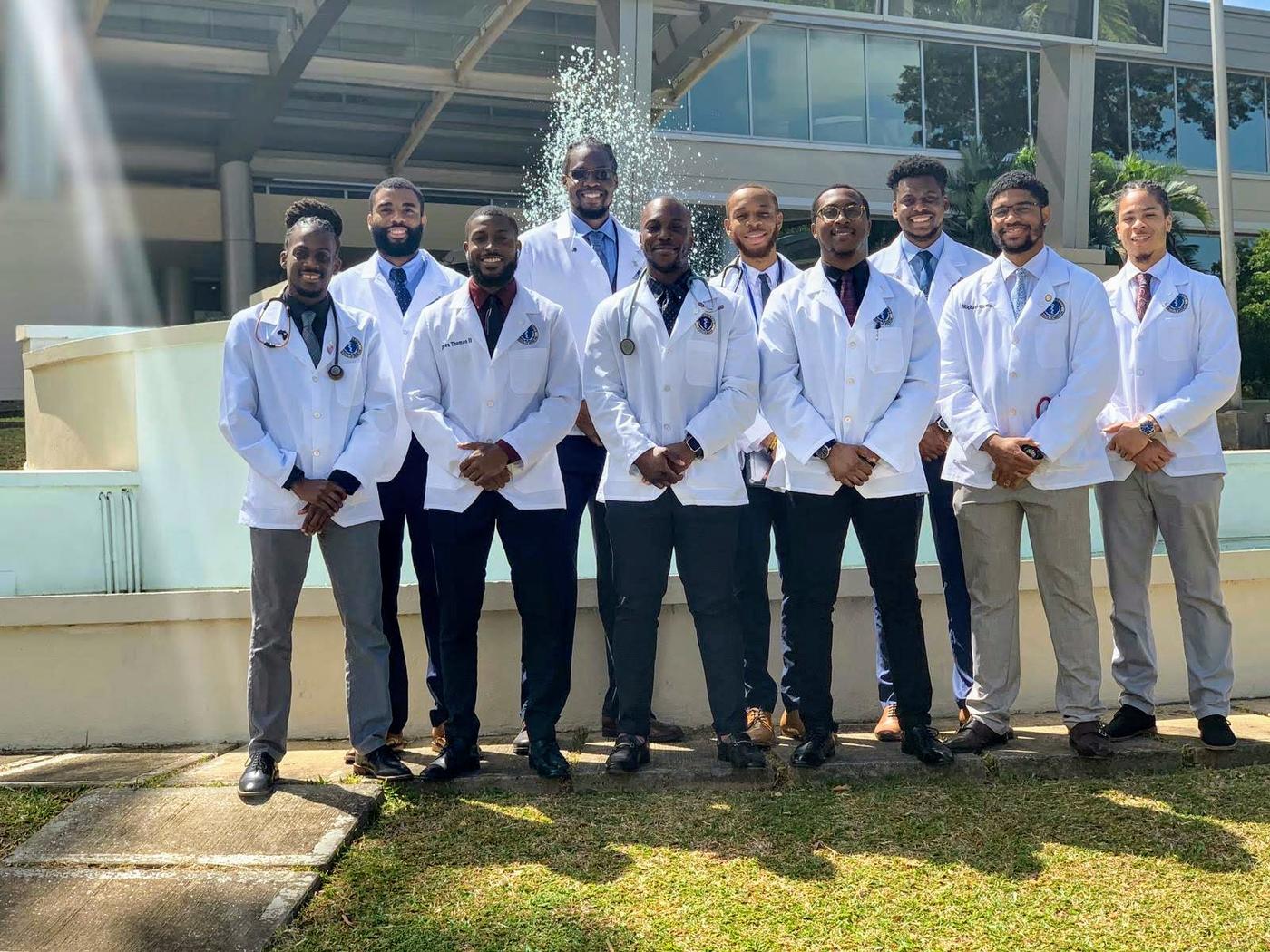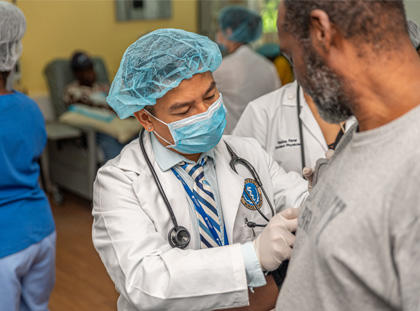The White Coat Ceremony marks the official entry of RUSM students into medical school. The ceremony commemorates the start of a medical student’s journey to become a doctor. At RUSM, we hold three white coat ceremonies annually to welcome incoming students in the fall, spring, and summer.
In the United States and many other countries, medical schools commemorate students’ entry into the medical profession by presenting them with their first white coat—a shorter version of the white coat they’ll wear as a physician. Although the ceremony is a recent tradition, the significance and symbolism of white coats in medicine date back over a century. Let’s explore how white coats have evolved to symbolize a doctor’s purity of purpose.
Why Do Doctors Wear White Coats?
Before physicians dressed in white coats, most Western physicians wore black, according to the American Medical Association’s Journal of Ethics. Until the late 1800s, doctors in the United States wore black formal wear. Thomas Eakins’ 1875 masterpiece The Gross Clinic shows Philadelphia surgeons performing thigh surgery in black attire similar to modern tuxedos.
Revolutionary advancements in medicine and scientific research in the late 1800s transformed medicine and medical education. Before germ theory ushered in the era of modern medicine, Western medicine wasn’t strongly rooted in scientific theory. There was limited standardized professional oversight of medical education until the AMA was founded in the mid-1800s.
Scientists and physicians began wearing white lab coats in the late 1880s. Some historians theorize that the appearance of white coats coincided with Joseph Lister’s discoveries in germ theory and antiseptic surgery. By 1889, Thomas Eakins’ painting, The Agnew Clinic, showed Philadelphia surgeons wearing white coats.
As medical schools adopted a rigorous and consistent curriculum based on science and clinical study, licensed physicians embraced the white coat to differentiate themselves from doctors without formal credentials and quacks peddling unproven potions. By 1915, almost all licensed physicians in the United States wore white coats.
What Is a White Coat Ceremony?
In 1993, Dr. Arnold P. Gold instituted the first White Coat Ceremony for the incoming medical students at the Columbia University College of Physicians and Surgeons in New York. Dr. Gold launched the practice because he believed that medical students should recognize the profession’s standards and responsibilities before they began formal training. He said students should declare their commitment to medicine and accept their obligations to the profession before starting medical school.
Today, the White Coat Ceremony takes place in 20 countries, including at nearly all AAMC-accredited U.S. medical schools. The Gold Foundation funds the program through grants.
At the RUSM White Coat Ceremony, RUSM faculty bestows incoming students with their first white coats as family and friends cheer them on. Then the entire incoming class recites the Oath of Physicians, a modern version of the Hippocratic Oath. During the COVID-19 pandemic, RUSM held virtual ceremonies.
Most medical students wear short, hip-length white coats until they enter residency when residents wear white coats that reach down to the knee. The short white coat worn by medical students and the full-length ones worn by most physicians is a long-standing tradition and a way for patients to identify the role of each care provider, according to Dr. James Feinstein, author of “Short White Coat.”
White Coats and Patient Perceptions
In a study of 4,000 patients, researchers at the University of Michigan found that a physician’s clothing impacts how patients view their doctor and in how satisfied they are with their care. The study asked patients their perceptions of doctors wearing white coats compared with doctors in scrubs and those in business attire. Three-quarters of patients ranked doctors in white coats as the most trustworthy, knowledgeable, caring, and approachable, followed by 20% preferring physicians in scrubs, and only 5% choosing doctors in business attire.
Not every physician or medical institution agrees that white coats are the best fashion choice, according to the American Academy of Medical Colleges. Many pediatricians and psychiatrists avoid white coats because their patients find them threatening. The Mayo Clinic requests that its physicians wear business attire because the institution believes that white coats build barriers between doctors and patients.
Regardless of whether a doctor decides to wear a white coat after medical school, RUSM students embrace the excitement and symbolism of the White Coat Ceremony. Get started on your path to earning a white coat by applying to RUSM.
Related Resources:




